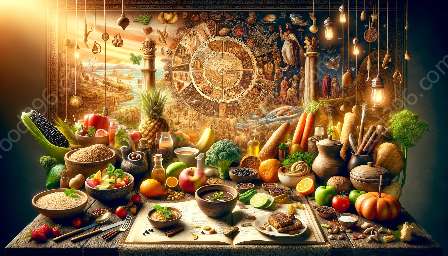Japan's culinary tradition is a reflection of its long history and diverse culture. From ancient rituals to modern trends, Japanese cuisine has evolved with unique flavors and techniques. In this exploration of Japanese cuisine history, we delve into the origins, influences, and significance of this beloved food culture.
Ancient Origins
The roots of Japanese cuisine can be traced back to ancient times, with a strong influence from neighboring countries such as China and Korea. Rice cultivation and the use of soybeans as a staple ingredient played a pivotal role in shaping early Japanese food culture.
Impact of Shinto and Buddhism
Shinto and Buddhism, the two major religions in Japan, also made significant contributions to the development of Japanese cuisine. Shintoism emphasized purity and simplicity, leading to a deep respect for natural ingredients and seasonal flavors. Meanwhile, Buddhism introduced vegetarianism and tea culture, influencing the way food was prepared and consumed.
Feudal Era and Food Culture
The feudal era brought about a distinct culinary culture in Japan. The emergence of samurai warriors and the establishment of the tea ceremony further enriched Japanese cuisine. The concept of kaiseki, a traditional multi-course meal, began to take form during this period, emphasizing the balance of flavors and presentation.
Introduction of Foreign Influences
During the 16th century, Japan opened its doors to foreign trade, leading to the introduction of new ingredients such as chili peppers, sweet potatoes, and tempura cooking techniques from Portuguese and Spanish traders. This exchange of culinary knowledge not only broadened the flavors of Japanese cuisine but also led to the creation of fusion dishes that still hold a place in modern Japanese dining.
Modernization and Globalization
In the late 19th century, Japan underwent a period of modernization, which greatly impacted its food culture. The influence of Western cuisine, particularly French and Italian cooking, began to shape the culinary landscape. This amalgamation of traditional Japanese techniques with international flavors gave rise to new culinary styles and inspired a wave of contemporary Japanese chefs to experiment with fusion cuisine.
Global Influence
Today, Japanese cuisine has garnered worldwide acclaim, with sushi, tempura, and ramen becoming iconic dishes celebrated across the globe. The meticulous attention to detail, emphasis on seasonal and fresh ingredients, and the artful presentation of dishes have solidified Japanese cuisine as a major player in the international food scene.
Cultural Significance
Japanese cuisine goes beyond its delectable flavors and exquisite presentation. It serves as a representation of Japanese culture, reflecting values such as harmony, respect, and appreciation for nature. The practice of omotenashi, which encompasses hospitality and thoughtful service, is deeply embedded in the dining experience, making Japanese cuisine more than just a feast for the taste buds.
Unwavering Tradition
Despite the evolution and modernization, Japanese food culture remains rooted in tradition. Practices such as washoku, the traditional dietary culture of the Japanese, have been recognized by UNESCO as an intangible cultural heritage, emphasizing the essential role of food in preserving and passing on cultural identity.
Conclusion
From its ancient origins to its modern influences on global cuisine, Japanese food history unfolds a captivating tale of innovation, tradition, and cultural significance. The unique blend of flavors, artful presentation, and profound connection to Japanese customs and values make Japanese cuisine a cherished treasure, enticing food enthusiasts around the world.




















